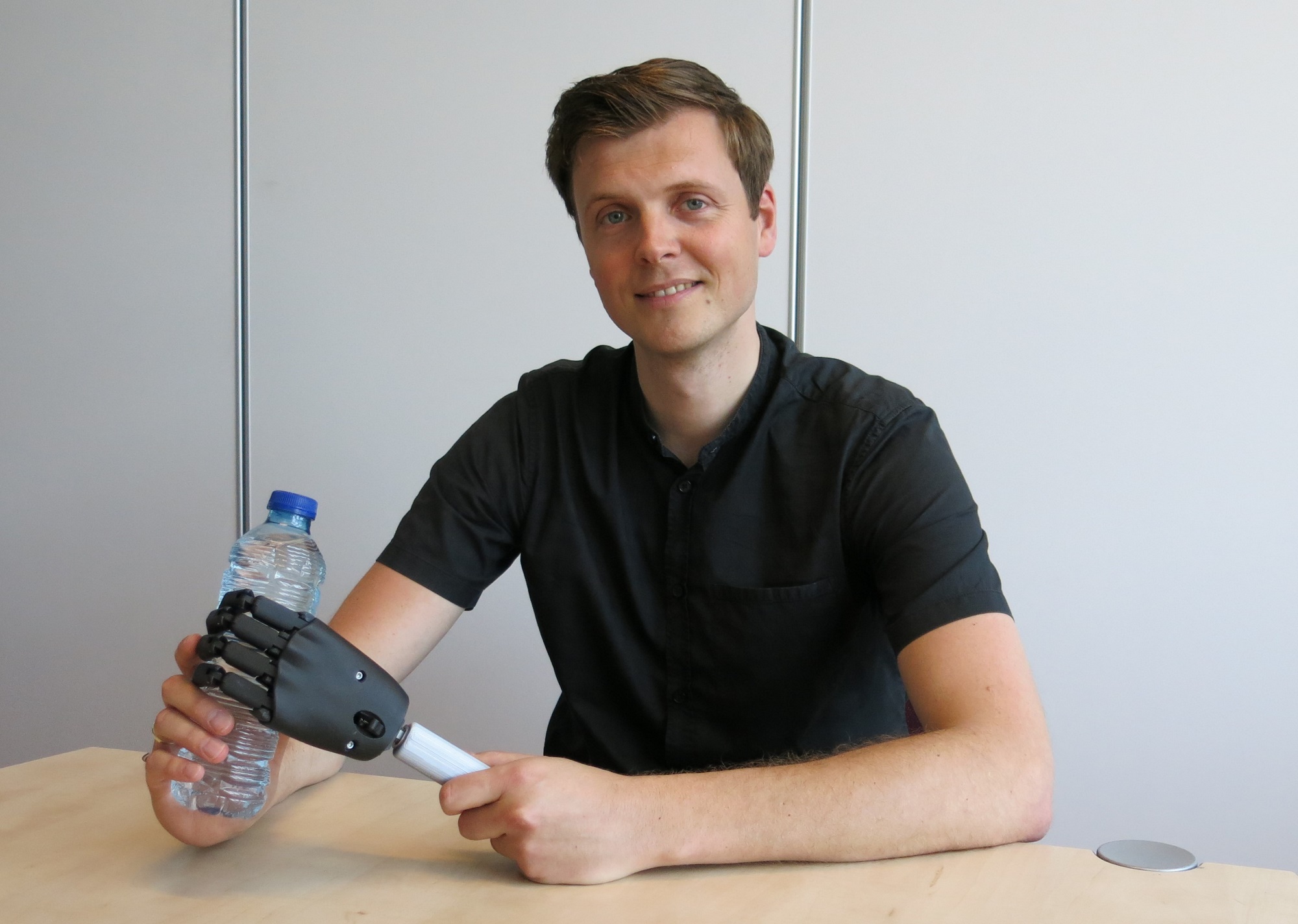Assistant Professor Gerwin Smit of 3mE is developing a self-grasping prosthetic hand inspired by human anatomy.
Assistant Professor Gerwin Smit of 3mE. (Photo: Heather Montague)
“I did my master’s at the University of Twente and then came here to do a PhD, working on prosthetic hands. Now I’ve been at TU Delft 10 years and I’m a tenure-track assistant professor. I’ve continued working on prosthetic hands and it has resulted, amongst other things, in the development of a self-grasping hand. I really like the idea of helping people to improve their lives with technology by finding smart, innovative solutions.
There are different types of prosthetic hands and all of them have their advantages and disadvantages. We wanted to design a hand that preferably has none of the disadvantages, like heavy motors or batteries, or a control cable with a shoulder strap. The idea is that you can open and close the hand without those things and without using your other hand.
The question then is: no motor or batteries, how is it going to work? That is how this project started. It resulted in a self-grasping hand that is inspired by human anatomy, based on the principle of tenodesis. This is the principle that if you have your wrist flexed forward then your fingers are kind of stretched. Now if you move your wrist backwards you see that your fingers are more curved. It’s called tenodesis because it’s about the alignment of the tendons. If you push the prosthetic hand against an object, it naturally closes. This way you can pick up objects without using your other hand.
‘I wondered why my aunt’s prosthetic hand was not moving’
There is a kind of personal connection for me doing this project. My aunt has a prosthetic hand, but it’s a passive hand. When I was a little boy I was always surprised as to why you would have a passive hand, I wondered why it was not moving. I thought we should be able to develop something better. Of course, later on I learned there are different options available, but all of these devices have drawbacks. And many people actually stop using these devices. We found that one third of people use a passive hand, a cosmetic hand, that has no grasping function. That’s why we developed a hand that looks nice cosmetically and has a grasping function. We designed the hand in such a way that it can be covered with a vinyl cosmetic glove, to make it look lifelike. At the moment, however, we are getting feedback that some people like the look of the hand itself and they want to use it without the glove.
The first prototype was made entirely of laser cut steel parts. The new one is 90% 3D printed but still contains some steel parts. We print what we can and use steel where we have to. We are collaborating with multiple parties, including Monash University in Melbourne. Several people there are using the hand as a clinical pilot. We are also collaborating with a company called Move Engineering, which is specialised in prosthetic devices, and they are going to bring it to market. It is my dream that one day people all over the world are using this innovative self-grasping hand.”
Want to be featured in Humans of TU Delft? Or do you know someone with a good story to tell? Send us an e-mail at humansoftudelft@gmail.com
Heather Montague / Freelance writer



Comments are closed.